
The Enchanting Rhodope Mountains of Bulgaria
Discover the Rhodope Mountains: Bulgaria's hidden gem, offering stunning landscapes, rich cultural heritage, and unparalleled natural beauty.
Nestled in the southern part of Bulgaria, the Rhodope Mountains are a sight to behold. With their lush greenery, deep forests, and breathtaking landscapes, these mountains offer a perfect escape for nature lovers and adventure seekers alike. The region is dotted with charming villages, each with its own unique character and traditions, giving visitors a glimpse into the rich cultural heritage of Bulgaria. The Rhodope Mountains are also home to many historical and natural landmarks. The ancient Thracian sanctuary of Perperikon and the Devil's Throat Cave, with its mysterious legends, are just a few of the must-see sites. Additionally, the region is famous for its delicious local cuisine, which features hearty dishes made from fresh, locally sourced ingredients. Whether you are hiking through the scenic trails, exploring the historical sites, or simply soaking in the serene atmosphere, the Rhodope Mountains promise an unforgettable experience. The friendly locals and their warm hospitality will make your visit even more special, ensuring you leave with cherished memories and a desire to return.
Local tips in Rhodope Mountains
- Visit during spring or autumn for the best weather and fewer crowds.
- Try the local dishes like patatnik and klin for an authentic taste of the region.
- Bring comfortable hiking shoes, as many attractions are best reached on foot.
- Consider hiring a local guide to learn more about the history and legends of the area.
- Don't miss the traditional music and dance performances often held in the villages.
The Enchanting Rhodope Mountains of Bulgaria
Nestled in the southern part of Bulgaria, the Rhodope Mountains are a sight to behold. With their lush greenery, deep forests, and breathtaking landscapes, these mountains offer a perfect escape for nature lovers and adventure seekers alike. The region is dotted with charming villages, each with its own unique character and traditions, giving visitors a glimpse into the rich cultural heritage of Bulgaria. The Rhodope Mountains are also home to many historical and natural landmarks. The ancient Thracian sanctuary of Perperikon and the Devil's Throat Cave, with its mysterious legends, are just a few of the must-see sites. Additionally, the region is famous for its delicious local cuisine, which features hearty dishes made from fresh, locally sourced ingredients. Whether you are hiking through the scenic trails, exploring the historical sites, or simply soaking in the serene atmosphere, the Rhodope Mountains promise an unforgettable experience. The friendly locals and their warm hospitality will make your visit even more special, ensuring you leave with cherished memories and a desire to return.
When is the best time to go to Rhodope Mountains?
Iconic landmarks you can’t miss
Tsarevets Fortress
Explore Tsarevets Fortress in Veliko Tarnovo, where history, stunning views, and cultural events come together in a breathtaking setting.
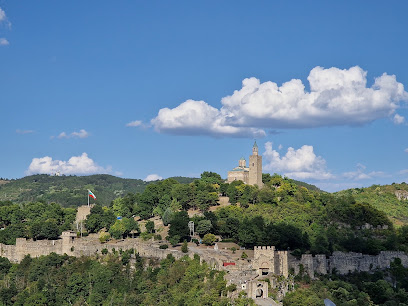
Rila National Park
Explore Bulgaria's breathtaking Rila National Park, a stunning national park with hiking trails, glacial lakes, and remarkable biodiversity.
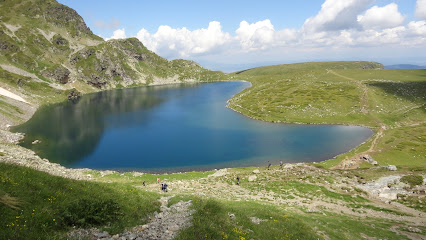
Ancient Stadium of Philipopolis
Discover the Ancient Stadium of Philipopolis, a majestic Roman-era landmark in Plovdiv, rich in history and cultural significance.
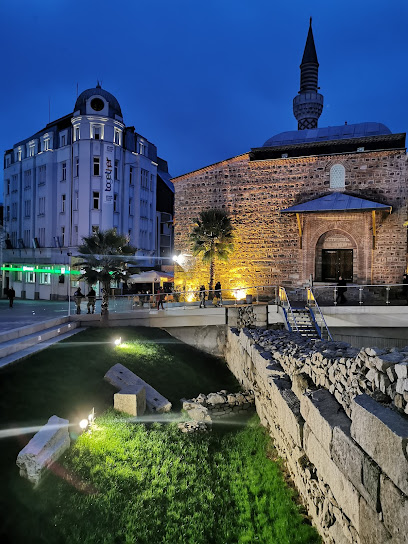
Asen's Fortress
Discover the historical allure and breathtaking views of Asen's Fortress, a must-visit destination in Bulgaria's stunning Rhodope Mountains.
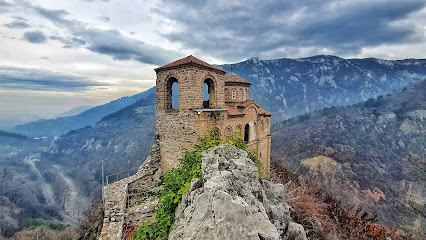
Pirin National Park
Discover the breathtaking landscapes and rich biodiversity of Pirin National Park, Bulgaria's natural gem for outdoor enthusiasts and nature lovers.
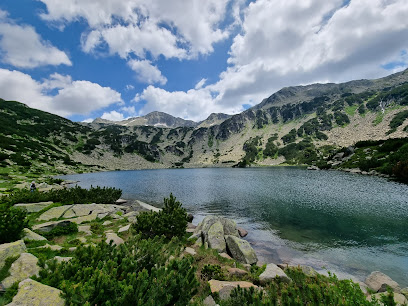
Madara Horseman
Discover the ancient artistry of the Madara Horseman, a UNESCO World Heritage site, nestled in Bulgaria's breathtaking landscape.
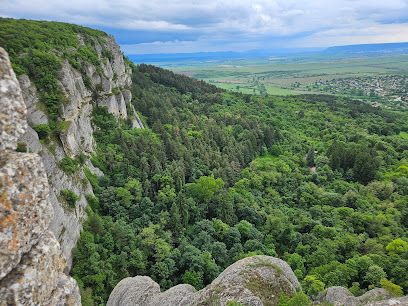
Park “Kleptuza”
Experience the natural beauty and tranquility of Park Kleptuza, a must-visit park in Velingrad, Bulgaria, perfect for relaxation and exploration.
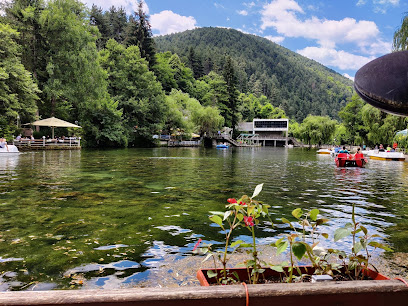
Devil's Throat Cave
Experience the breathtaking beauty and fascinating legends of the Devil's Throat Cave in Bulgaria's stunning Rhodopes mountains.
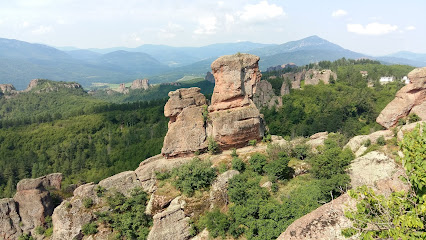
Trigrad Gorge
Explore the stunning Trigrad Gorge in Bulgaria, a natural wonder surrounded by towering cliffs, lush forests, and diverse wildlife.
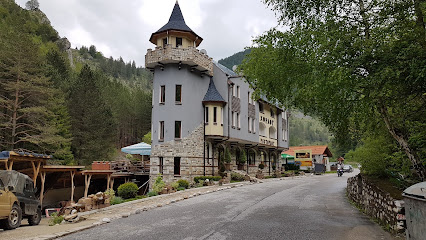
Хижа “Чудните мостове” / Hut “Wonderful Bridges”
Experience nature's beauty at Hut 'Wonderful Bridges', a serene guest house and restaurant nestled in Bulgaria's picturesque landscapes.
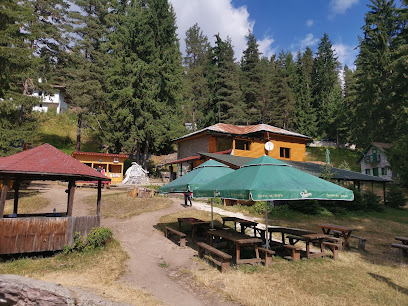
Boyana Church
Explore the historic beauty of Boyana Church, a UNESCO World Heritage site, renowned for its stunning frescoes and breathtaking views in Sofia.
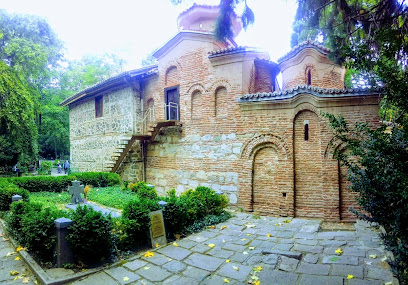
Ancient sanctuary city Perperikon
Discover the mystical ruins of Perperikon, an ancient sanctuary city in the Rhodope mountains, where history and breathtaking views come together.
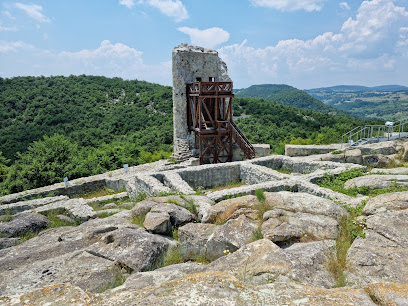
Eagle's Eye
Discover breathtaking mountain views at Eagle's Eye, the premier observation deck in Yagodina, Bulgaria, perfect for nature lovers and photographers.
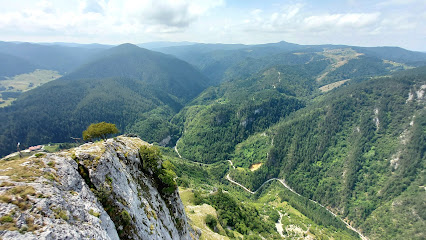
Old Town of Plovdiv
Explore the historic charm of Old Town Plovdiv, where ancient ruins meet vibrant culture in Bulgaria's enchanting UNESCO World Heritage site.
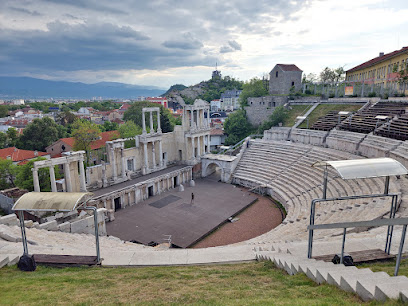
Devil's bridge
Discover the breathtaking Devil's Bridge in the Rhodope Mountains, a stunning blend of history, nature, and architectural marvel.
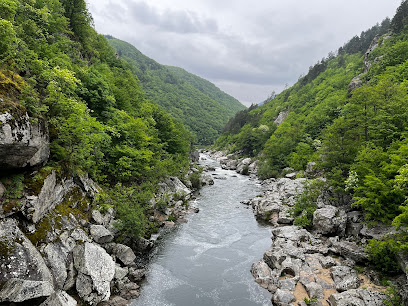
Unmissable attractions to see
Park “Kleptuza”
Experience nature's beauty at Park 'Kleptuza', a serene oasis in Velingrad perfect for relaxation, exploration, and family fun.
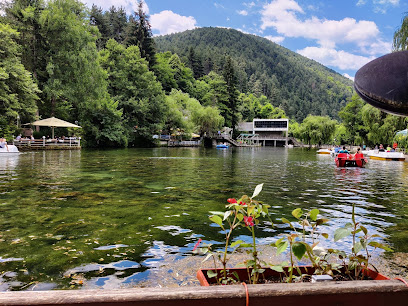
Uhlovitsa Cave
Discover the breathtaking beauty of Uhlovitsa Cave, a natural wonder in the Rhodope Mountains, rich in history and stunning geological formations.
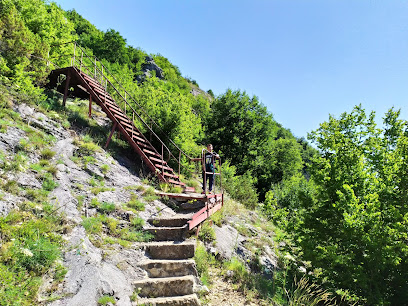
Belintash
Discover the mystical beauty of Belintash, a sacred peak in the Rhodope Mountains, where ancient history and breathtaking landscapes come together.
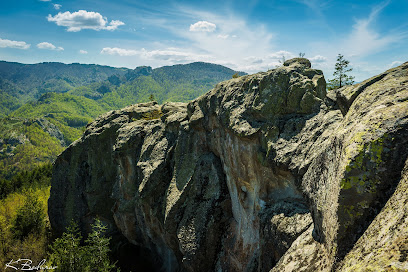
Bekovi Skali
Explore Bekovi Skali, a breathtaking nature preserve in Ravnogor, Bulgaria, featuring stunning landscapes, outdoor adventures, and rich biodiversity.
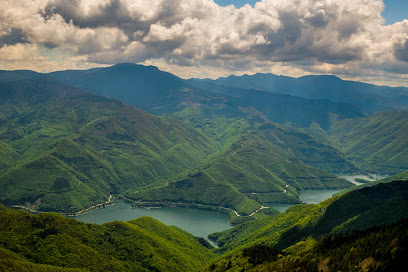
Karadzhov kamak
Discover the enchanting beauty and spiritual serenity of Karadzhov Kamak in the Rhodope Mountains, a must-visit destination for nature lovers.
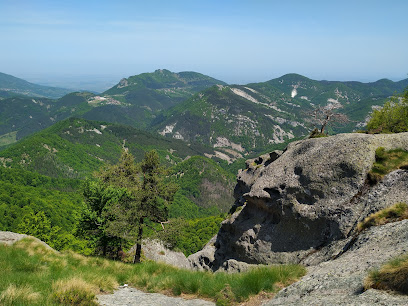
Valchi kamak (Wolf Rock)
Discover the breathtaking views from Valchi Kamak, a stunning rock formation in Gyovren that showcases the beauty of the Rhodope Mountains.
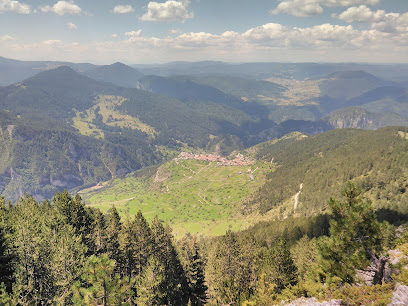
Fotinovo Falls
Explore the enchanting Fotinovo Falls, a stunning natural attraction in Bulgaria, perfect for nature lovers and adventure seekers alike.
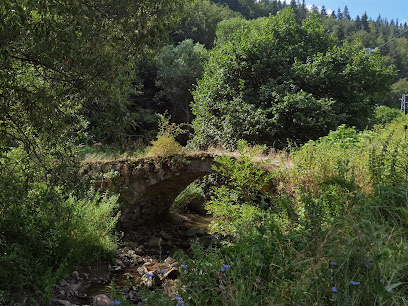
Rodopi Mountain Range National Park
Discover the stunning landscapes and rich biodiversity of Rodopi Mountain Range National Park in Greece, a must-visit for nature lovers and adventurers.
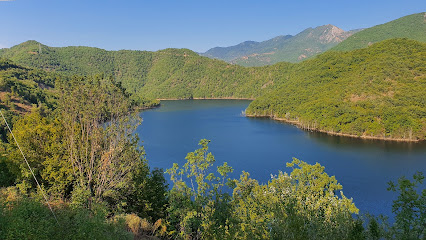
Utroba (Womb) Cave & Thracian Sanctuary
Explore the mystical Utroba Cave in Bulgaria's Rhodope Mountains, a Thracian sanctuary showcasing breathtaking rock formations and rich cultural heritage.
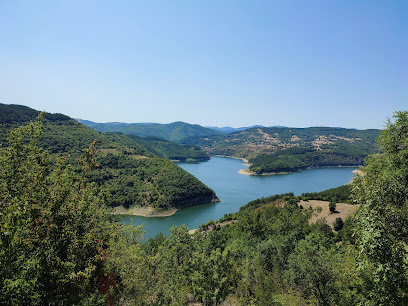
Rhodopes Narrow Gauge Railway Line
Discover the breathtaking beauty of Bulgaria on the Rhodopes Narrow Gauge Railway Line, where scenic views meet rich cultural heritage.
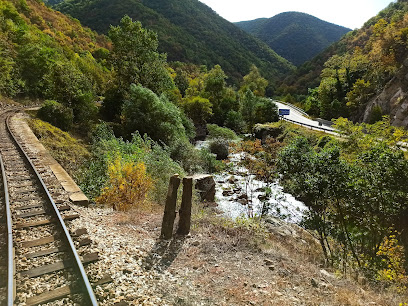
Koshnitsa Kaleto Fortress
Discover the enchanting Koshnitsa Kaleto Fortress, a historical treasure nestled in the stunning Rodopi mountains of Bulgaria.
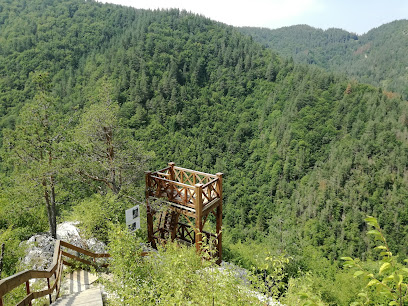
Buynovo River Gorge
Discover the breathtaking Buynovo River Gorge, a nature preserve in Bulgaria offering stunning landscapes, diverse wildlife, and outdoor adventures.
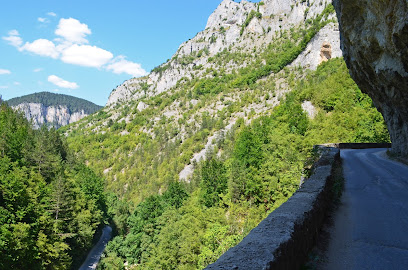
Elephant Rock
Explore the iconic Elephant Rock in Shiroka Laka, a stunning natural attraction offering breathtaking views and a serene escape into Bulgaria's picturesque landscapes.
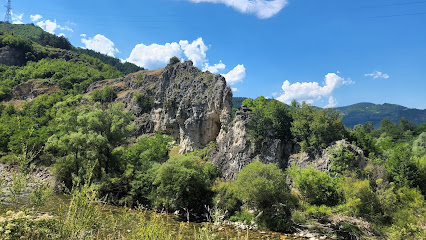
Горски Парк Амзово
Explore Gorski Park Amzovo, a stunning outdoor escape in Smolyan, Bulgaria, perfect for hiking, biking, and experiencing the beauty of nature.
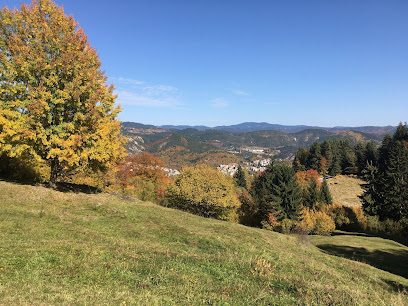
Chit kaya Thracian Sanctuary
Discover the ancient Thracian traditions at Chit Kaya Sanctuary, a historical landmark nestled in Bulgaria's stunning Rhodope Mountains.
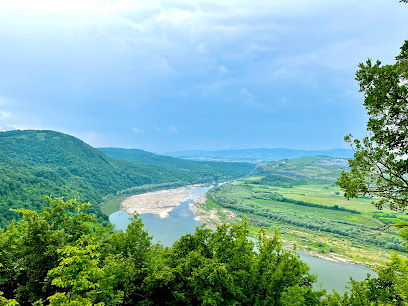
Essential places to dine
Хижа “Чудните мостове” / Hut “Wonderful Bridges”
Experience nature's beauty at Hut 'Wonderful Bridges' in the stunning Rhodopi Mountains – a perfect blend of comfort and adventure.
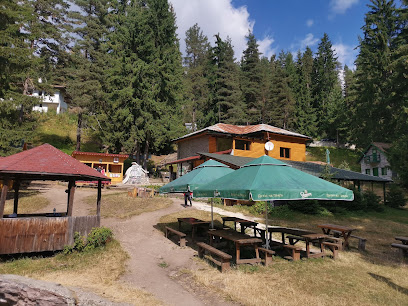
Moma Bulgarian Food and Wine
Experience authentic Bulgarian cuisine at Moma - where traditional flavors meet modern fine dining in Sofia's vibrant center.
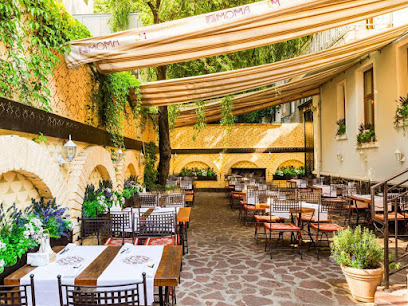
Snezhanka Pamporovo
Discover authentic Bulgarian cuisine at Snezhanka Pamporovo, where local flavors meet stunning mountain views in an unforgettable dining experience.
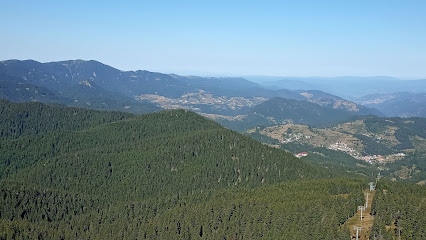
Old Sailor
Discover Old Sailor in Nessebar for an authentic seafood experience with stunning views and rich Bulgarian flavors.
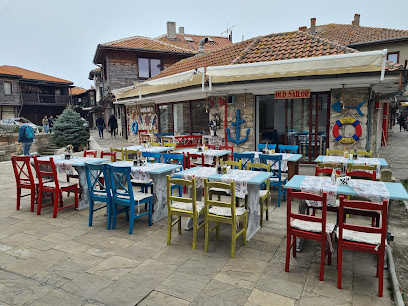
Khan's Tent
Experience the vibrant flavors and cultural charm of Bulgaria at Khan's Tent in Sunny Beach – where every meal is a celebration.
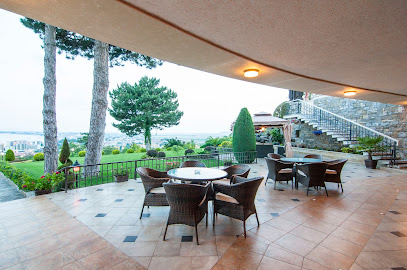
Ismena SPA Hotel
Experience luxury and serenity at Ismena SPA Hotel in the stunning Rhodope Mountains - your perfect escape into nature's embrace.
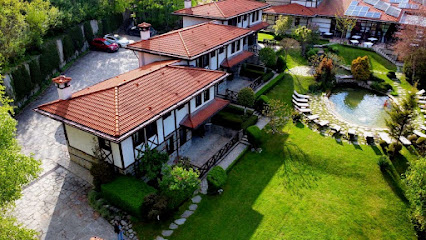
Glavatarski Han
Discover the perfect blend of comfort and culinary delights at Glavatarski Han in scenic Bulgaria.

Devin SPA Hotel | Devin Spa Hotel
Experience ultimate relaxation at Devin SPA Hotel with luxurious accommodations and rejuvenating spa services surrounded by stunning nature.
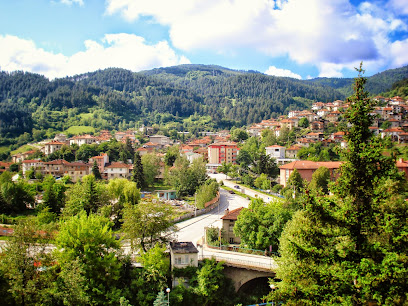
Комплекс Родопски кът - Лещен
Experience authentic Bulgarian hospitality at Комплекс Родопски кът - Лещен with delightful cuisine and stunning mountain views.
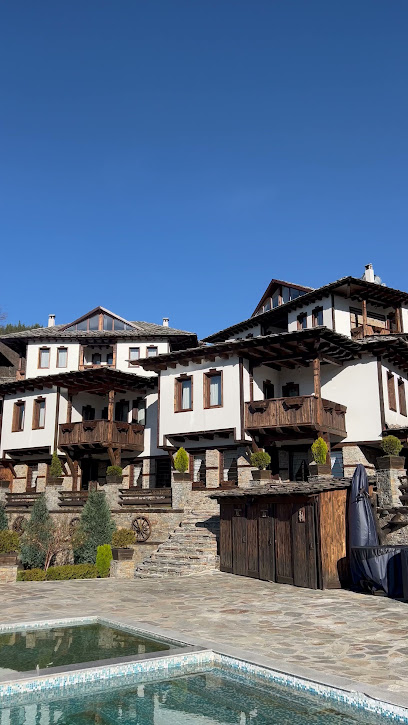
Rodopski Dom
Discover comfort and local charm at Rodopski Dom, your gateway to exploring Bulgaria's stunning Rhodope Mountains.
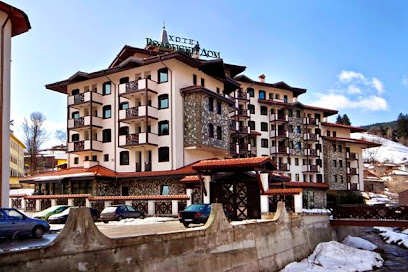
Happy Duck
Experience delightful Bulgarian cuisine at Happy Duck in Borovets - where every meal is a celebration of flavor amidst stunning mountain views.
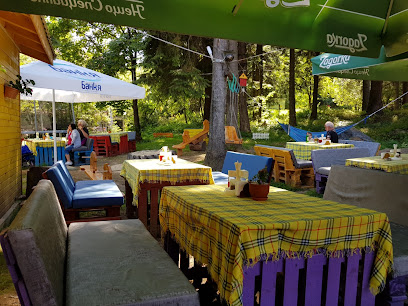
Pepelanovskiya konak
Discover the flavors of the Rhodope Mountains at Pepelanovskiya Konak - where tradition meets taste in Chepelare.
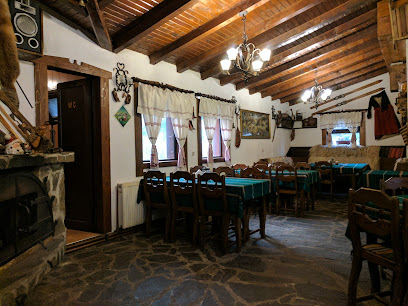
Walnuts Life&Food
Experience the authentic flavors of Bulgaria at Walnuts Life&Food – where culinary artistry meets local tradition in a cozy setting.
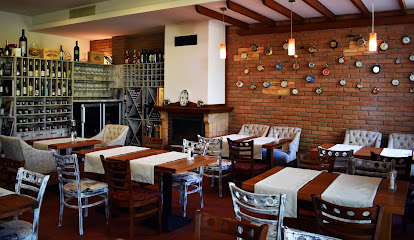
Италиански ресторант Леонардо
Savor authentic Italian cuisine amidst the stunning scenery of Bansko at Leonardo Restaurant - where every meal is an exquisite experience.
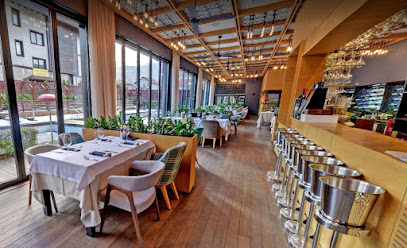
Механа „При Славчев“
Discover the authentic taste of Bulgaria at Механа „При Славчев“, where tradition meets flavor in the heart of Shiroka Laka.
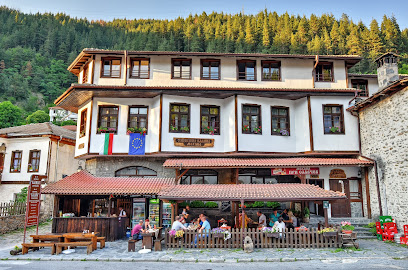
Markets, malls and hidden boutiques
Serdika Center
Discover Serdika Center in Sofia, where shopping meets culture with a variety of brands, delightful dining, and engaging entertainment options.
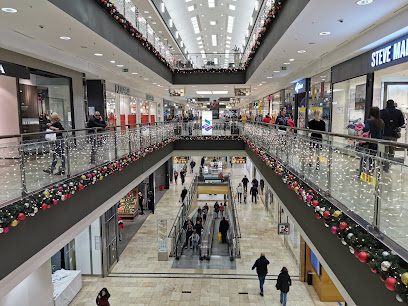
The Mall
Discover the vibrant shopping, dining, and entertainment experience at The Mall in Sofia, Bulgaria, where every visit is a new adventure.
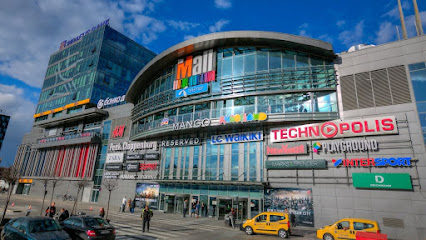
Bulgaria Mall
Experience the ultimate shopping adventure at Bulgaria Mall, Sofia's top destination for fashion, dining, and entertainment.
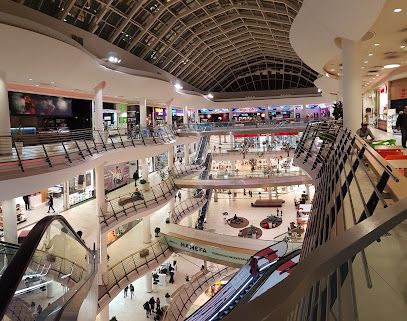
Mall Galleria Burgas
Explore Mall Galleria Burgas, the ultimate shopping destination in Burgas, Bulgaria, featuring diverse shops, dining delights, and entertainment options.

Asen's Fortress
Discover the historic Asen's Fortress, a breathtaking medieval site offering stunning views and rich Bulgarian heritage.
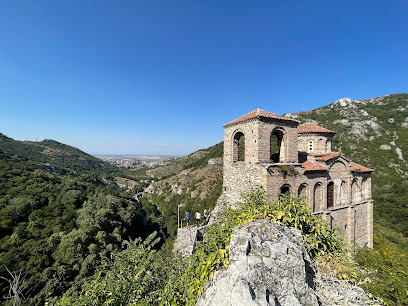
Devil's Throat Cave
Explore the enchanting Devil's Throat Cave, a geological marvel nestled in Bulgaria's stunning Rhodope Mountains, rich in history and natural beauty.
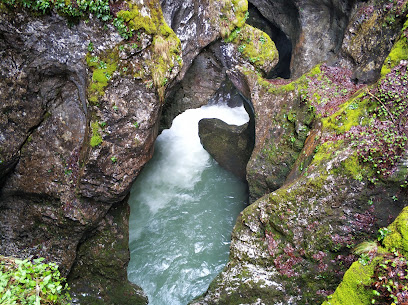
Trigrad Gorge
Explore the breathtaking beauty of Trigrad Gorge, a natural gem in Bulgaria's Rhodope Mountains, perfect for adventure and nature lovers alike.
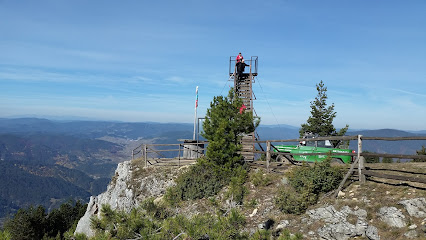
Хижа “Чудните мостове” / Hut “Wonderful Bridges”
Explore the stunning natural beauty and unique rock formations at Hut 'Wonderful Bridges' in the heart of the Rhodopi Mountains.
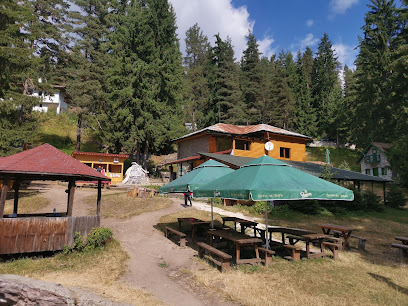
Ancient sanctuary city Perperikon
Explore Perperikon, an ancient sanctuary city offering a captivating blend of history, archaeology, and stunning mountain landscapes for all travelers.
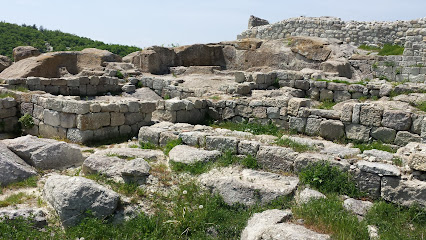
Eagle's Eye
Discover breathtaking mountain views at Eagle's Eye, an iconic observation deck in Yagodina, Bulgaria, perfect for nature enthusiasts.
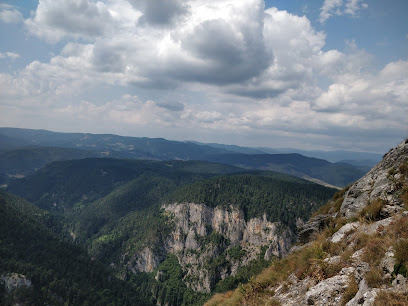
Devil's bridge
Discover the enchanting Devil's Bridge in Bulgaria's Rhodope Mountains, a stunning historical site surrounded by breathtaking natural beauty.
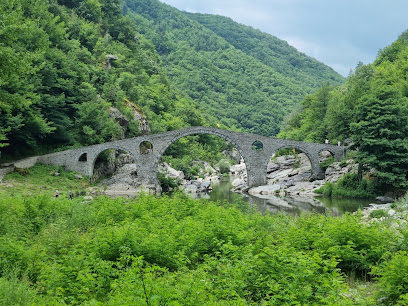
Yundola Market
Discover the vibrant Yundola Market in the stunning Rodopi Mountains, where local culture, fresh produce, and handmade crafts await your exploration.
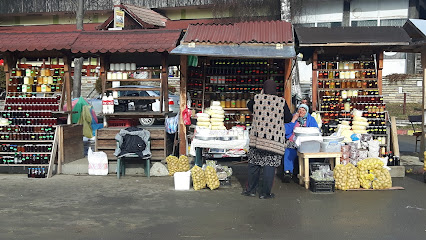
Nevyastata Ecotrail
Discover the natural beauty and tranquility of Nevyastata Ecotrail, a premier hiking destination in the Rhodope Mountains of Bulgaria.
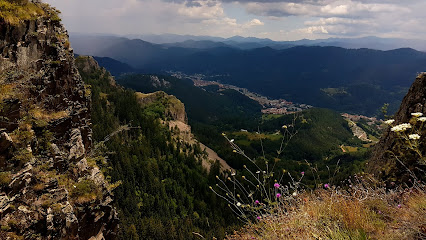
Belintash
Explore the stunning natural beauty and ancient history of Belintash in the Rhodope Mountains, a must-visit tourist attraction for nature lovers.
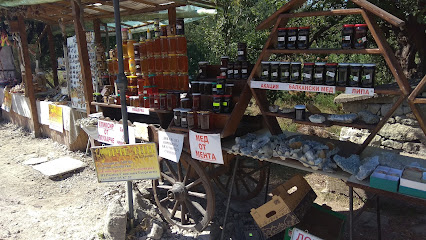
The Waterfalls Canyon
Explore The Waterfalls Canyon, a breathtaking hiking area in Bulgaria, featuring stunning waterfalls and lush nature trails for all adventurers.
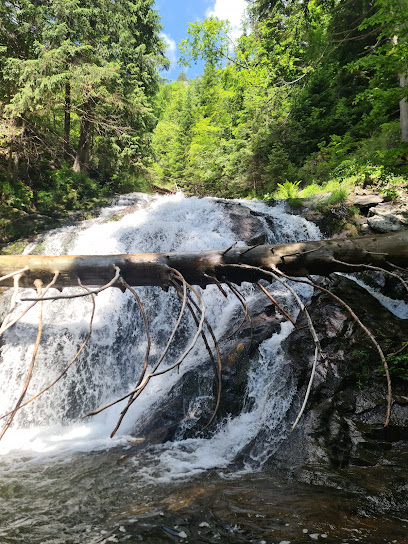
Essential bars & hidden hideouts
Happy Bar & Grill
Experience a culinary blend of European and Sushi delights at Happy Bar & Grill in the vibrant heart of Ruse.
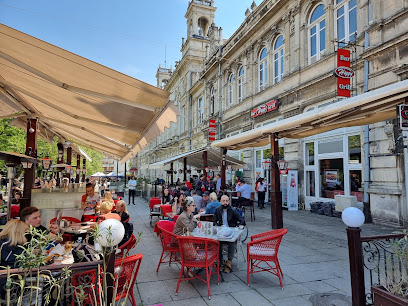
Хижа “Чудните мостове” / Hut “Wonderful Bridges”
Experience the breathtaking beauty of Hut 'Wonderful Bridges' in the Rhodopi Mountains, where nature and local culture come together.
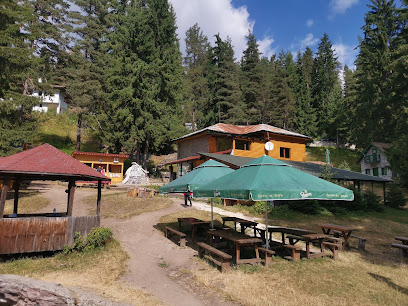
Snezhanka Pamporovo
Experience the authentic flavors of Bulgaria at Snezhanka Pamporovo, a mountain restaurant serving traditional dishes with breathtaking views.
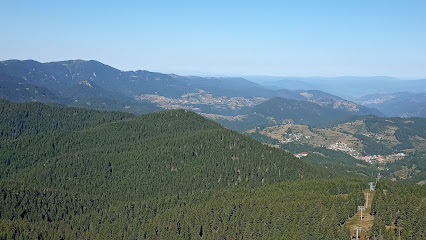
The Cocktail Bar
Discover the vibrant atmosphere and innovative cocktails at The Cocktail Bar in Sofia, where every sip is a step into mixology artistry.
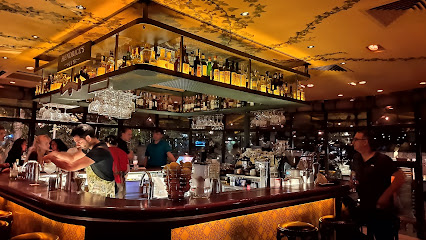
Rock'nRolla
Experience the pulse of Sofia's nightlife at Rock'nRolla, a premier rock music club with live performances, cocktails, and karaoke.

Cacao Beach Club
Experience vibrant nightlife at Cacao Beach Club in Sunny Beach, Bulgaria, where music, cocktails, and stunning sea views come together for an unforgettable evening.
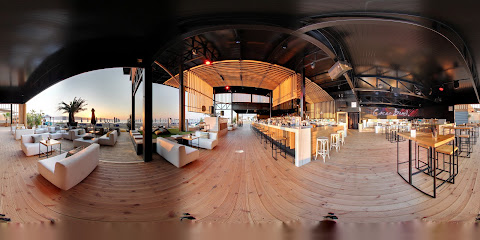
65 Fireflies
Discover the vibrant cocktail scene at 65 Fireflies in Sofia, where creative mixology and a lively atmosphere await every visitor.
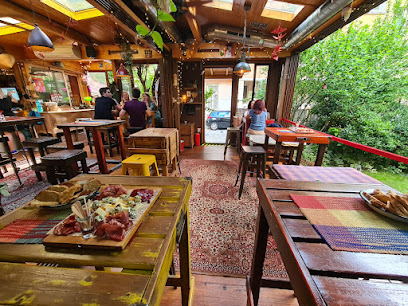
Megapark Dolphin
Experience the lively ambiance of Megapark Dolphin in Golden Sands, Varna – a perfect blend of drinks, entertainment, and seaside charm.
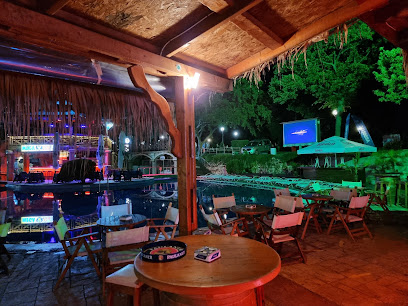
5L Speakeasy bar
Discover the unique charm of 5L Speakeasy Bar in Sofia, where exceptional cocktails and a cozy atmosphere create unforgettable memories.
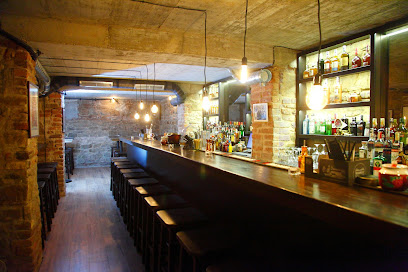
Hambara
Experience the lively ambiance and diverse menu at Hambara, Sofia's vibrant bar where locals and tourists mingle in a unique setting.
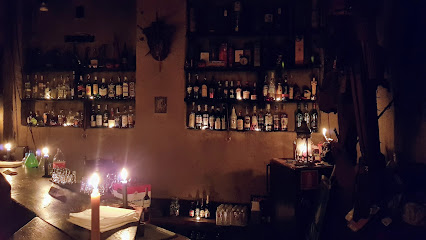
Sputnik Cocktail Bar
Discover Sofia's vibrant cocktail scene at Sputnik Cocktail Bar, where innovative drinks meet a lively atmosphere in the heart of the city.

Condor Bar
Discover the lively atmosphere and diverse drink selection at Condor Bar in Sunny Beach, Bulgaria, perfect for relaxation and entertainment.
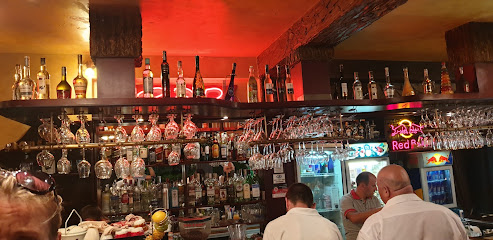
Pirin 75
Experience the vibrant bar scene at Pirin 75 in Bansko, where delightful drinks meet a lively atmosphere in the heart of the mountains.
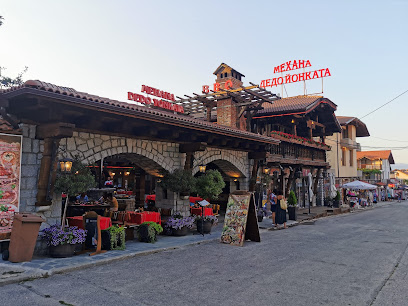
Pepelanovskiya konak
Experience the authentic flavors of the Rhodope Mountains at Pepelanovskiya Konak in Chepelare, where culinary tradition meets warm hospitality.
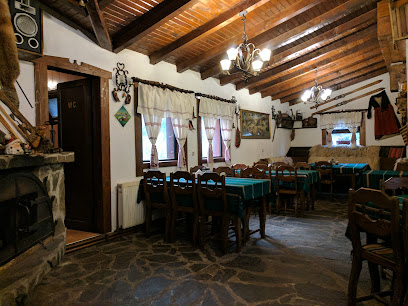
Iglika Bar
Experience the vibrant nightlife at Iglika Bar in Sunny Beach, where affordable drinks and a lively atmosphere await you.
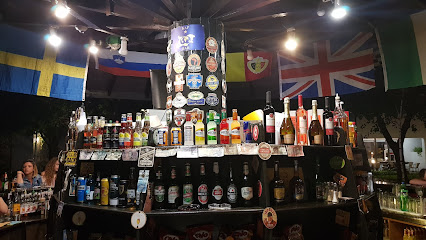
Local Phrases about Rhodope Mountains
-
- HelloЗдравей
[Zdravey] - GoodbyeДовиждане
[Dovizhdane] - YesДа
[Da] - NoНе
[Ne] - Please/You're welcomeМоля
[Molya] - Thank youБлагодаря
[Blagodarya] - Excuse me/SorryИзвинявай
[Izvinyavay] - How are you?Как си?
[Kak si?] - Fine. And you?Добре. А ти?
[Dobre. A ti?] - Do you speak English?Говорите ли английски?
[Govorite li angliyski?] - I don't understandНе разбирам
[Ne razbiram]
- HelloЗдравей
-
- I'd like to see the menu, pleaseБих искал да видя менюто, моля
[Bih iskal da vida menyuto, molya] - I don't eat meatНе ям месо
[Ne yam meso] - Cheers!Бъди здрав
[Badi zdrav] - I would like to pay, pleaseБих искал да платя, моля
[Bih iskal da platya, molya]
- I'd like to see the menu, pleaseБих искал да видя менюто, моля
-
- Help!Помощ!
[Pomosht!] - Go away!Изчезвай!
[Izchezvay!] - Call the Police!Обадете се на полицията!
[Obadete se na politsiyata!] - Call a doctor!Обадете се на лекар!
[Obadete se na lekar!] - I'm lostЗагубих се
[Zagubih se] - I'm illБолен съм
[Bolen sum]
- Help!Помощ!
-
- I'd like to buy...Бих искал да купя...
[Bih iskal da kupya...] - I'm just lookingПросто гледам
[Prosto gledam] - How much is it?Колко струва?
[Kolko struva?] - That's too expensiveТова е твърде скъпо
[Tova e tvurde skupо] - Can you lower the price?Можете ли да намалите цената?
[Mozhete li da namalite tsenata?]
- I'd like to buy...Бих искал да купя...
-
- What time is it?Колко е часът?
[Kolko e chasat?] - It's one o'clockЕдин час е
[Edin chas e] - Half past (10)Половинна (10)
[Polovinna (10)] - MorningСутрин
[Sutrin] - AfternoonСледобед
[Sledobed] - EveningВечер
[Vecher] - YesterdayВчера
[Vchera] - TodayДнес
[Dnes] - TomorrowУтре
[Utre] - 1Едно
[Edno] - 2Две
[Dve] - 3Три
[Tri] - 4Четири
[Chetiri] - 5Пет
[Pet] - 6Шест
[Shest] - 7Седем
[Sedem] - 8Осем
[Osem] - 9Девет
[Devet] - 10Десет
[Deset]
- What time is it?Колко е часът?
-
- Where's a/the...?Къде е...
[Kade e...] - What's the address?Какъв е адресът?
[Kakav e adresat?] - Can you show me (on the map)?Можете ли да ми покажете (на картата)?
[Mozhete li da mi pokazhete (na kartata)?] - When's the next (bus)?Кога е следващият (автобус)?
[Koga e sledvashtiyat (avtobus)?] - A ticket (to ....)Билет (до ...)
[Bilet (do ...)]
- Where's a/the...?Къде е...
History of Rhodope Mountains
-
The Rhodope Mountains were once the heartland of the ancient Thracian civilization, which thrived from the 12th century BC until the Roman conquest. The Thracians were known for their craftsmanship, religious rituals, and warrior culture. Numerous archaeological sites, including sanctuaries, tombs, and fortresses, such as the Perperikon and Tatul, reveal the rich history and spiritual life of the Thracians in the Rhodope region.
-
The Rhodope Mountains are famously associated with Orpheus, the legendary musician, poet, and prophet in Greek mythology. It is believed that Orpheus was born in these mountains and roamed the same forests where he enchanted animals and even stones with his music. This mythological connection has immortalized the Rhodopes in ancient stories, making it a significant cultural landmark in the region.
-
After the Roman conquest in the 1st century AD, the Rhodope Mountains became part of the Roman Empire. The Romans developed infrastructure, including roads and fortifications, to secure the area and facilitate trade. The remains of Roman roads, bridges, and fortresses can still be seen today, reflecting the strategic importance of the Rhodopes during Roman times.
-
The Asen Fortress, perched on a steep hill near the town of Asenovgrad, is a medieval stronghold in the Rhodope Mountains. Named after Tsar Ivan Asen II, who significantly reinforced it in the 13th century, the fortress played a crucial role in the defense of the Bulgarian Empire against Byzantine and Ottoman incursions. Its well-preserved walls and the Church of the Holy Mother of God provide a glimpse into the medieval history of the region.
-
The Ottoman Empire ruled the Rhodope Mountains from the late 14th century until the late 19th century. This period brought significant cultural and architectural influences, including the construction of mosques, baths, and bridges. The town of Zlatograd is a prime example of this cultural synthesis, with its preserved Ottoman-era architecture and ethnographic complexes showcasing traditional crafts and lifestyles.
-
During the 18th and 19th centuries, the Rhodope Mountains were a center for the Bulgarian National Revival, a cultural and political movement aimed at the reawakening of Bulgarian national identity and independence from Ottoman rule. The region saw the establishment of numerous schools, churches, and community centers, fostering education, literature, and the arts. The village of Shiroka Laka is particularly notable for its well-preserved Revival architecture and vibrant cultural traditions.
-
The Rhodope Mountains are home to the Pomaks, a Muslim Bulgarian ethnic group. The community's history is intertwined with the broader historical narrative of the region, particularly during the Ottoman period. The Pomaks have preserved unique cultural and religious traditions, which are evident in their music, folklore, and festivals. Villages like Ribnovo and Gorno Dryanovo provide a window into the rich cultural tapestry of the Pomak people.
-
In the post-World War II era, the Rhodope Mountains underwent significant development under the socialist regime in Bulgaria. The construction of hydroelectric power plants, roads, and tourism infrastructure aimed to modernize the region and improve the livelihoods of its inhabitants. The creation of natural parks and reserves, such as the Rhodope Natural Park, helped to preserve the unique biodiversity and natural beauty of the mountains.
Rhodope Mountains Essentials
-
The Rhodope Mountains are located in the southern part of Bulgaria. The nearest major city with an international airport is Sofia, the capital of Bulgaria. From Sofia, you can travel to the Rhodope Mountains by car, bus, or train. The drive takes approximately 3 to 4 hours. Alternatively, you can take a bus from Sofia’s central bus station to various towns in the Rhodope region, such as Smolyan, Pamporovo, and Devin. Train options are limited but available to certain parts of the Rhodope Mountains, such as the scenic route from Septemvri to Dobrinishte.
-
Transportation within the Rhodope Mountains varies. Car rentals are a popular choice for tourists who want to explore the region at their own pace. Local buses connect major towns and villages, but schedules can be infrequent. Taxis are available in larger towns, and for more adventurous travelers, renting a mountain bike or hiking can be a great way to explore the natural beauty of the area. For the best experience, consider a combination of car rental and public transport.
-
The official currency of Bulgaria is the Bulgarian Lev (BGN). Credit and debit cards are widely accepted in hotels, restaurants, and larger shops in the tourist areas of the Rhodope Mountains. However, it is advisable to carry cash, especially when visiting smaller villages and remote areas. ATMs are available in major towns, but it's a good idea to withdraw enough cash while in the larger cities before heading deeper into the mountains.
-
The Rhodope Mountains are generally a safe destination for tourists. However, like any travel destination, it is important to take standard precautions. Avoid walking alone at night in unfamiliar areas and keep an eye on your belongings in crowded places. Petty theft can occur, especially in busier tourist spots. There are no specific high-crime areas targeting tourists, but staying vigilant and aware of your surroundings is always recommended.
-
In case of emergency, dial 112 for immediate assistance, which is the common emergency number in Bulgaria. The Rhodope region has local police stations and medical facilities in larger towns like Smolyan and Devin. It is highly recommended to have travel insurance that covers medical emergencies. For minor health issues, pharmacies are available in the larger towns where you can purchase over-the-counter medications.
-
Fashion: Do dress in layers as mountain weather can vary greatly. Avoid overly revealing clothing. Religion: Do respect local customs, especially in religious sites. Always dress modestly and behave respectfully. Public Transport: Do respect seating arrangements and offer your seat to elderly passengers. Don't eat or drink on public transport. Greetings: Do greet people with a handshake and a friendly smile. Eating & Drinking: Do try local dishes and beverages, such as patatnik and rakia. Don't refuse food or drink offerings, as it might be considered impolite.
-
To experience the Rhodope Mountains like a local, visit the traditional villages such as Shiroka Laka and Kovachevitsa. Engage with locals who are often friendly and willing to share stories about their culture and traditions. Don't miss the local festivals, such as the Rozhen National Folklore Fair. For a unique experience, hike the eco-trails and enjoy the natural beauty and biodiversity of the region. Also, consider staying in family-run guesthouses for a more authentic experience.
Trending Landmarks in Rhodope Mountains
-
Tsarevets Fortress
-
Rila National Park
-
Ancient Stadium of Philipopolis
-
Asen's Fortress
-
Pirin National Park
-
Madara Horseman
-
Park “Kleptuza”
-
Devil's Throat Cave
-
Trigrad Gorge
-
Хижа “Чудните мостове” / Hut “Wonderful Bridges”
-
Boyana Church
-
Ancient sanctuary city Perperikon
-
Eagle's Eye
-
Old Town of Plovdiv
-
Devil's bridge
Nearby Cities to Rhodope Mountains
-
Things To Do in Haskovo
-
Things To Do in Serres
-
Things To Do in Stara Zagora
-
Things To Do in Alexandroupoli
-
Things To Do in Gabrovo
-
Things To Do in Thessaloniki
-
Things To Do in Pleven
-
Things To Do in Canakkale
-
Things To Do in Katerini
-
Things To Do in Burgas
-
Things To Do in Shumen
-
Things To Do in Kamenica
-
Things To Do in Ruse
-
Things To Do in Gjilan
-
Things To Do in Volos













